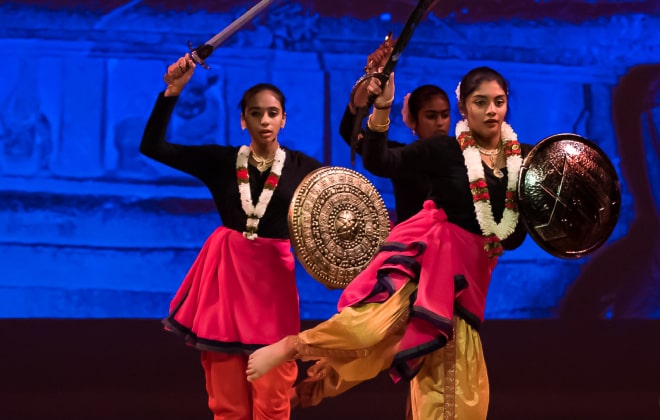Thang-Ta is an elaborate and dynamic martial art traditional folk form from Manipur. The proper name for Thang-Ta is Huyen Lallong, meaning "The Art of the Sword and Spear."
The practice of Thang-Ta may be carried out in various ways. One component of this art form involves performing rituals. Another involves elements of dance using swords and spears, an aggressive form that involves the actual act of fighting. Thang-Ta also involves forms of war dance such as the sword dance, Thangkairol, and the spear dance, Khosarol.

It is an elaborate physical culture system involving breathing methods, meditations, and rituals. Some of the sword and spear forms are entirely ceremonial, although they are composed of material techniques. They are to be performed only on special occasions or under particular circumstances.
The movement behavior of the different parts of the Manipuri martial body is derived from the cultural and customary uses of daily life. Thang-Ta retained its fighting character secretively at the private home schools of individual teachers or Gurus after being prohibited during the Colonial Raj era (1891-1947). It survived during Manipur's integration with the Indian Union in 1949. The art has been shown in festivals and performance platforms abroad since 1976.

Today, Thang-Ta is popular in Manipur as a martial art form and technique used in theater and dance. The performance of Thang-Ta techniques, as in the solo decorative sword dance or a choreographed Thang-Ta duel on the stage, has become common in Manipur. Across Manipur, several martial arts academies train men and women in Thang-Ta, and many dance and theater schools include Thang-Ta among their course offerings.